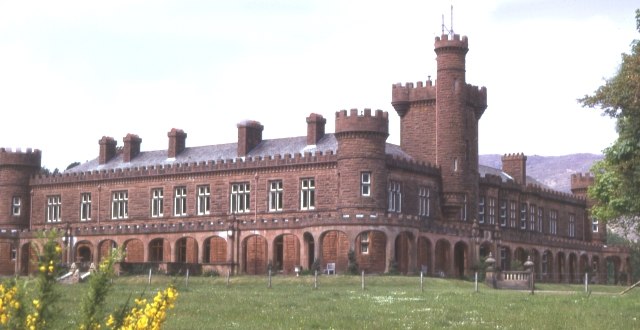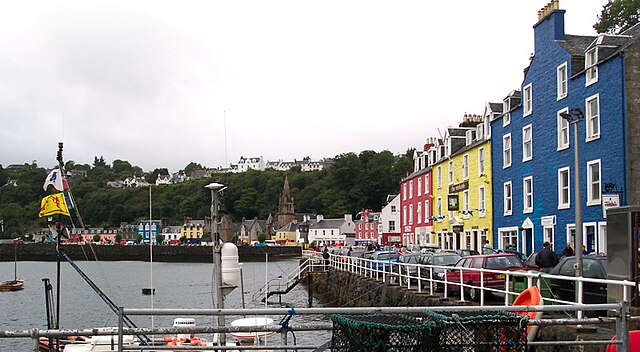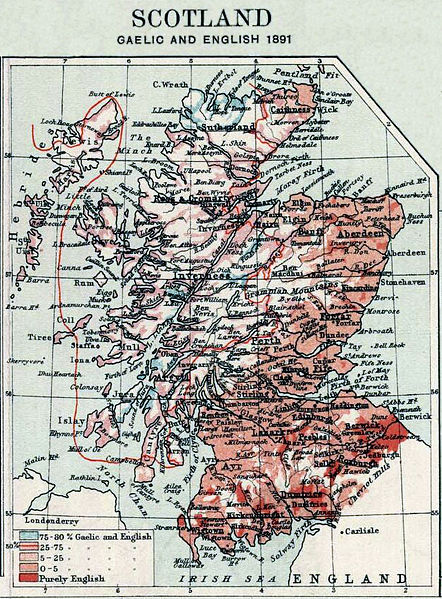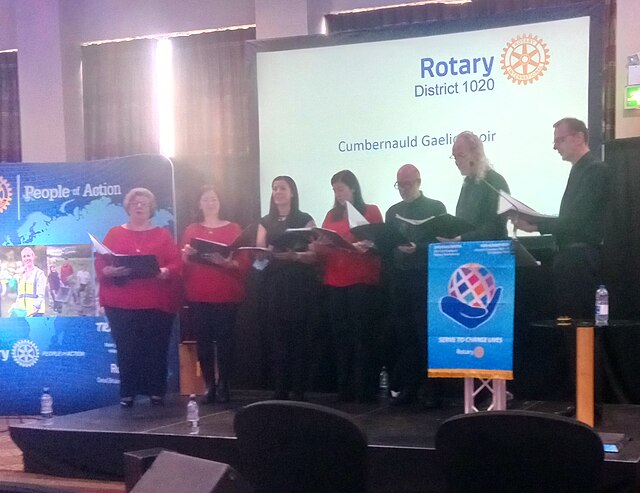The Inner Hebrides is an archipelago off the west coast of mainland Scotland, to the south east of the Outer Hebrides. Together these two island chains form the Hebrides, which experience a mild oceanic climate. The Inner Hebrides comprise 35 inhabited islands as well as 44 uninhabited islands with an area greater than 30 hectares. Skye, Mull, and Islay are the three largest, and also have the highest populations. The main commercial activities are tourism, crofting, fishing and whisky distilling. In modern times the Inner Hebrides have formed part of two separate local government jurisdictions, one to the north and the other to the south. Together, the islands have an area of about 4,130 km2 (1,594 sq mi), and had a population of 18,948 in 2011. The population density is therefore about 4.6 inhabitants per square kilometre.
Looking west to Balephuil Bay, Tiree across the machair
Kinloch Castle, Rùm
Tobermory, the largest settlement on Mull
Sgurr Alasdair, the highest peak in the Inner Hebrides
Scottish Gaelic, also known as Scots Gaelic or simply Gaelic, is a Goidelic language native to the Gaels of Scotland. As a Goidelic language, Scottish Gaelic, as well as both Irish and Manx, developed out of Old Irish. It became a distinct spoken language sometime in the 13th century in the Middle Irish period, although a common literary language was shared by the Gaels of both Ireland and Scotland until well into the 17th century. Most of modern Scotland was once Gaelic-speaking, as evidenced especially by Gaelic-language place names.
1891 distribution of English (including Scots) and Gaelic in Scotland 75–80% Gaelic, and English ━ 25–75% Gaelic, and English; line indicates the 50% isogloss 5–25% Gaelic, and English 0–5% Gaelic, and English Purely English
Cumbernauld Gaelic Choir in 2021
Anne Lorne Gillies speaking publicly in the Scottish Gaelic language
Police Scotland vehicle logo (Bilingual)








